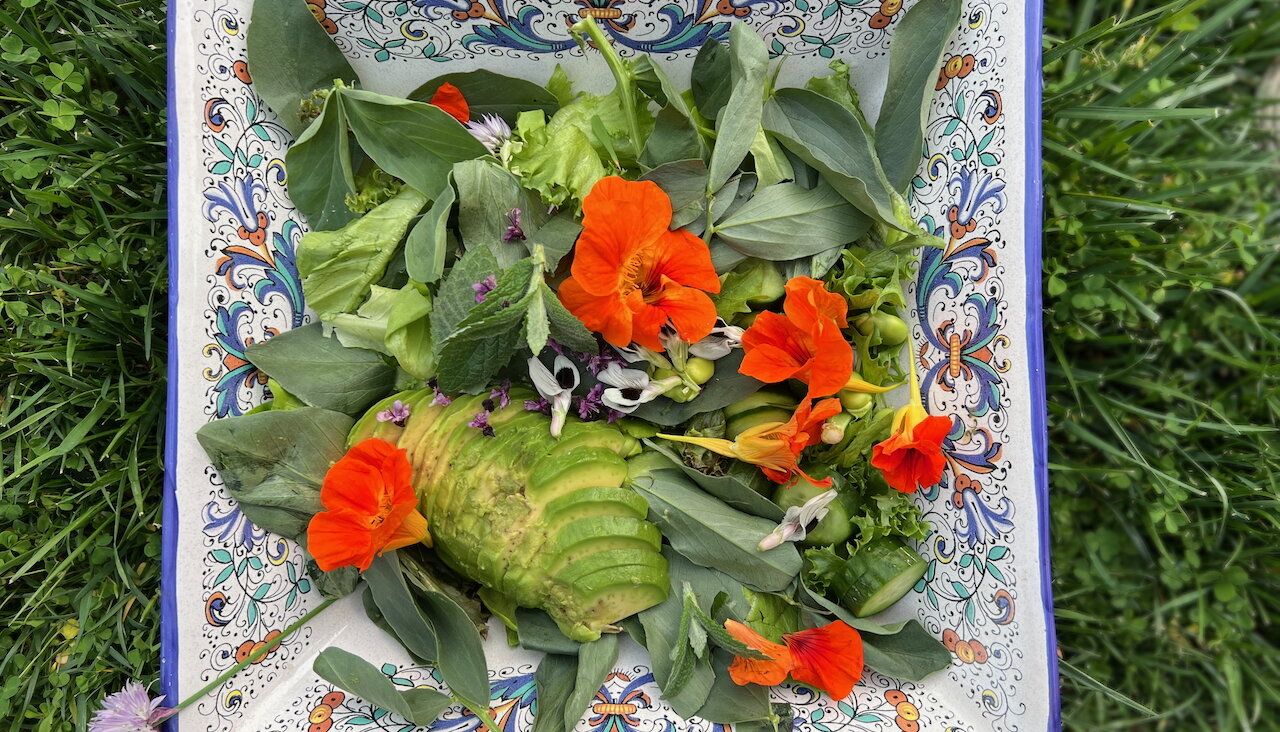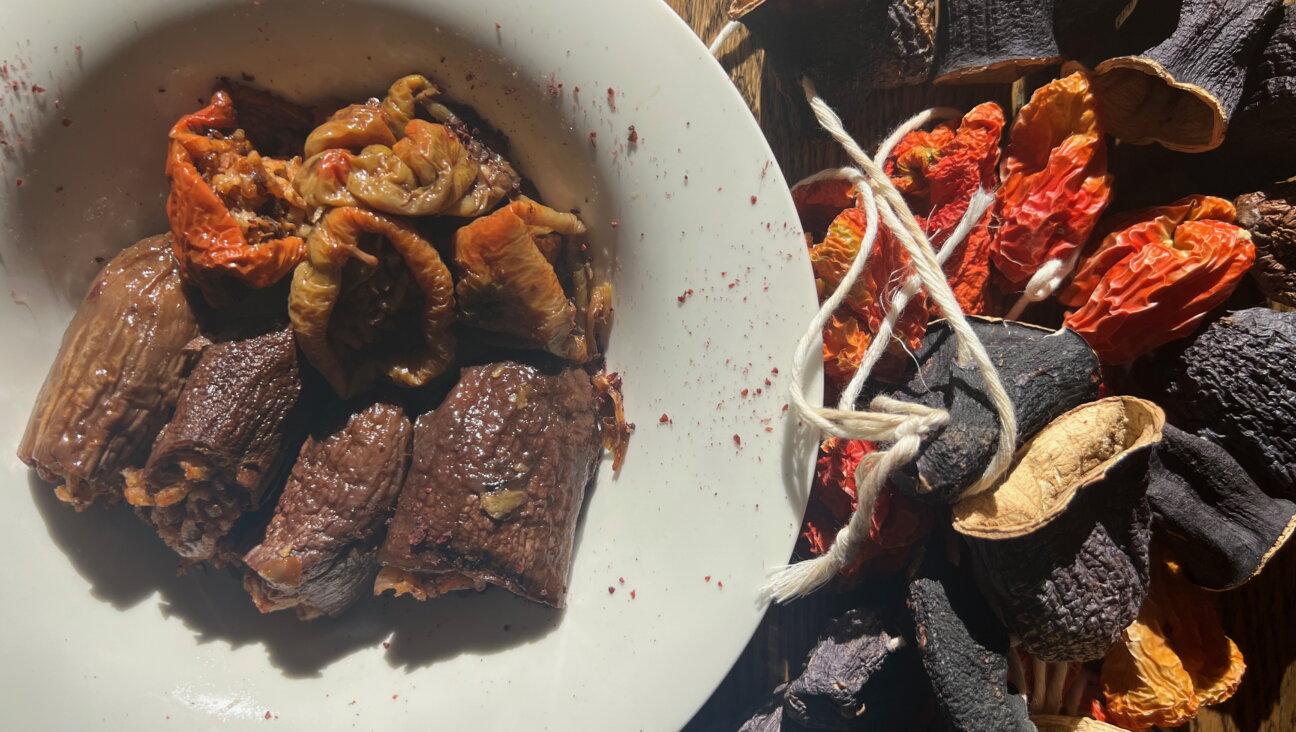Shabbat Meals: Venezuelan Arroz Con Pollo

Image by kochtopf
In the almost feudal state that Nicaragua was 90 years ago, daughters of wealthy families were taught French and needlework, and were expected to marry well. They knew nothing about how their food was cooked, their clothes made, or their households provisioned. They weren’t allowed to associate with the servants, or even to enter the kitchen. Finishing school in Switzerland, then marriage to a suitable boy — those were girls’ expectations in Managua, the capital of Nicaragua, back when my Mom was growing up.
My mother’s parents, descendants of Spanish Jews, owned sugar-cane and coffee plantations. They were proud of their Sephardic heritage, but for the exception of lighting Shabbat candles and abstaining from pork and shellfish, they had dropped Jewish observance. Sad, but maybe inevitable in a country where only a handful of Jewish families have ever lived.
In 1943, my mother visited family in the United States. There she met, and fell in love with, her brother’s friend, a handsome Jewish soldier. In the rushed way of those war times, they married a few months before he was sent to Europe. Now a war bride, Mom went to live with her young husband’s parents in New York. Grandma had studied at the New York branch of the Cordon Bleu cooking school. Under her kind tutelage, Mom discovered a real culinary talent. When Dad returned from war in Europe, he found his exotic bride speaking English and cooking with a fine hand.
Later, the growing family moved to Puerto Rico and then Venezuela, where I was born. Although Mom had servants again, she still took an active part in running the house.
“With Grandma, I learned American style cooking,” she told me. “Gravies, roasts, and apple pies. But almost all the foods you ate growing up, I learned from the Venezuelan women who worked for me.”
I remember those women, their warm-colored skin and warm voices, their unhurried efficiency around the house and their mischievous, sense of humor. Side by side with them in the kitchen, Mom learned the secrets of rice perfumed with garlic, of hearty black bean soup, and the gala dish arroz con pollo — rice cooked with chicken and olives.
As my parents became more religiously observant, Shabbat dinner became the week’s highlight. My mother would spread a white tablecloth on the table and on it set the silver challah platter and the polished Kiddush cup. Dad loved the Shabbat melodies of pre-Holocaust Chassidic communities, and we would sing them at the meal. Some were nigunim — tunes with no words. They had a military swing, and we kids liked to thump the table with our fists in time to “Bim bom” and “ay didi dai.” Others were haunting prayers for the rebuilding of Jerusalem. Arroz con pollo was one of my mother’s Shabbat specialties, and the savory aroma of it is forever entwined in my memories with those Shabbat dinners, and a dawning appreciation of all that was subtle and strong in her food. Years later, I understand that the strength and subtlety were of Mom’s own character, expressed as the exactly right point of seasoning and timing.
Buen provecho! (Bon appétit!)
Rafaela’s Arroz con Pollo
Serves 6
1/4 teaspoon saffron threads, infused for 20 minutes in 1/2 cup hot water or chicken stock
1 4-pound chicken, with neck, cut into 8 pieces
1/4 cup olive oil
2 medium onions, finely chopped
1 green or red bell pepper, chopped into large chunks
1 teaspoon ground cumin
1-1/4 teaspoons salt
1/4 teaspoon black pepper, or more to taste
1- 1/2 cups white rice
2 large tomatoes, coarsely chopped
4 large garlic cloves, peeled and minced
1 large bay leaf
1/4 cup green or black olives
2- 1/2 cups hot chicken stock or water
*optional: 1/2 small hot chili
1 cup cooked fresh or frozen peas, to garnish
1) In a small bowl or cup, infuse the saffron in hot water or stock.
2) Rinse the rice and set it to drain.
3) Use a large, shallow pan. Pour olive oil in it and brown chicken pieces over medium heat. Turn pieces to brown on all sides. Don’t crowd the chicken; if necessary do the browning in two batches. Remove chicken to a platter.
4) In the same oil, sauté onions and green pepper till starting to soften. Add cumin, salt and pepper. Add rice and stir, cooking till it glistens, about 2 minutes.
5) Add tomatoes and cook another 3 minutes. Stir garlic in. Add bay leaf. Put the browned chicken back in the pot. Add optional chili.
6) Add the saffron-infused stock, olives, and remaining hot stock or water. Taste for seasoning and add salt, pepper, or more cumin if desired.
7) Cover the pan and bring the contents to a low boil. Immediately lower the heat and allow to steam until the rice is fluffy and the chicken tender – about 20 minutes.
8) Let the pan stand, covered, for 10 minutes before serving the arroz con pollo. Spoon out onto a serving platter and garnish with cooked peas all around.
Excellent with cold beer, white wine, or lemonade.
Note: for a quickly-made stock, take the wings and neck of the chicken and simmer them together with 1 carrot, 2 stalks celery, 1 chopped medium onion, 1 sliced medium tomato, 1 whole, peeled garlic clove and a little salt. Cover and cook for 45 minutes hour. Strain, and use hot.
The Forward is free to read, but it isn’t free to produce

I hope you appreciated this article. Before you go, I’d like to ask you to please support the Forward.
Now more than ever, American Jews need independent news they can trust, with reporting driven by truth, not ideology. We serve you, not any ideological agenda.
At a time when other newsrooms are closing or cutting back, the Forward has removed its paywall and invested additional resources to report on the ground from Israel and around the U.S. on the impact of the war, rising antisemitism and polarized discourse.
This is a great time to support independent Jewish journalism you rely on. Make a gift today!
— Rachel Fishman Feddersen, Publisher and CEO
Support our mission to tell the Jewish story fully and fairly.
Most Popular
- 1

Fast Forward Ye debuts ‘Heil Hitler’ music video that includes a sample of a Hitler speech
- 2

Opinion It looks like Israel totally underestimated Trump
- 3

Culture Cardinals are Catholic, not Jewish — so why do they all wear yarmulkes?
- 4

Fast Forward Student suspended for ‘F— the Jews’ video defends himself on antisemitic podcast
In Case You Missed It
-

Fast Forward Federal security grants to synagogues are resuming after two-month Trump freeze
-

Fast Forward NY state budget weakens yeshiva oversight in blow to secular education advocates
-

Fast Forward Margot Friedlander, German Holocaust survivor who landed a Vogue cover, dies at 103
-

Culture Is this heaven or is it New Jersey? 9 innings of the Jewish-American pastime
-
Shop the Forward Store
100% of profits support our journalism
Republish This Story
Please read before republishing
We’re happy to make this story available to republish for free, unless it originated with JTA, Haaretz or another publication (as indicated on the article) and as long as you follow our guidelines.
You must comply with the following:
- Credit the Forward
- Retain our pixel
- Preserve our canonical link in Google search
- Add a noindex tag in Google search
See our full guidelines for more information, and this guide for detail about canonical URLs.
To republish, copy the HTML by clicking on the yellow button to the right; it includes our tracking pixel, all paragraph styles and hyperlinks, the author byline and credit to the Forward. It does not include images; to avoid copyright violations, you must add them manually, following our guidelines. Please email us at [email protected], subject line “republish,” with any questions or to let us know what stories you’re picking up.















